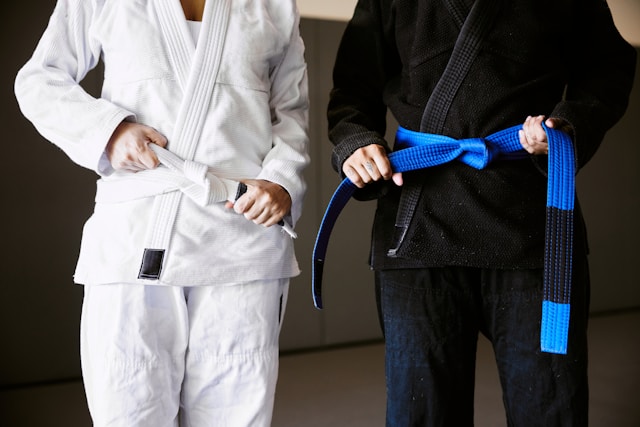
Brazilian Jiu-Jitsu offers a powerful framework for women’s self-defense by emphasizing leverage, technique, and mental preparedness. In an era where personal safety concerns are rising, mastering these methods gives women the tools to stay safe and in control. Through consistent training, participants learn physical maneuvers and develop keen situational awareness and unshakeable confidence. The following sections—each centered on women’s self-defense—outline why these skills matter, the core techniques taught, how training builds self-belief, and inspiring real-life success stories.
Why Women’s Self-Defense Matters
Understanding the need for women’s self-defense begins with recognizing real-world risks. Global studies report that one in three women will experience physical or sexual violence during her lifetime. Learning self-protection techniques is therefore not optional—it’s essential. Brazilian Jiu-Jitsu, or BJJ, teaches smaller practitioners how to use leverage and body mechanics to neutralize larger attackers. Rather than relying on strength alone, women’s self-defense through Jiu-Jitsu focuses on joint locks, chokeholds, and positional control.
Moreover, self-defense training enhances situational awareness. Students learn to read body language, spot escape routes, and maintain safe distances before a confrontation can escalate. This proactive mindset is critical to women’s self-defense, as avoiding danger is often the best defense. Finally, regular practice cultivates stress-management skills. By learning to stay calm under pressure, women improve their physical response and strengthen their mental resilience in everyday challenges.
Core Jiu-Jitsu Techniques for Women Self-Defense
At the heart of BJJ’s effectiveness in women self-defense are foundational techniques tailored for real threats. Training begins with mastering a solid base and posture to prevent takedowns. Instructors emphasize break-falls so students can safely land if thrown, reinforcing confidence in riskier drills. From there, learners practice key grips—wrist control, underhooks, and collar ties—to manipulate an opponent’s balance.
Transitioning to the ground, where many assaults end, is a critical aspect of women self-defense. The guard position teaches women to control attackers from their backs, preventing strikes and creating opportunities to escape. Escapes from side control and mount are drilled until they become reflexive. Submissions like the armbar and the rear-naked choke are last-resort tools to incapacitate an aggressor long enough to flee or summon help. By repeating these moves against resisting partners in scenario-based training, women ensure that their women self-defense techniques remain reliable under stress.
Building Confidence with Women Self-Defense Training
Beyond physical moves, the journey of women’s self-defense in Jiu-Jitsu is a confidence-building process. Stepping onto the mat for the first time can feel intimidating, but each training session delivers measurable progress. Earning stripes and belts marks milestones—mastering a sweep or successfully escaping a pin encourages practitioners to trust their abilities. This translates off the mat: women report feeling more assertive in daily interactions, whether negotiating at work or setting personal boundaries.
The communal atmosphere of BJJ academies further bolsters self-esteem. Training partners and instructors foster an environment of respect, encouragement, and mutual growth. Beginners receive hands-on guidance from advanced practitioners, reinforcing a sense of belonging. This camaraderie is a vital element of women self-defense, as feeling supported helps maintain motivation through plateaus or challenging periods. With regular exercise, which burns off stress and releases endorphins, trainees often notice uplifted moods and clearer focus in their routines and relationships.
Real Stories: Women Self-Defense Success with Jiu-Jitsu
The impact of women self-defense training shines through countless real-life transformations. Take Anna, an urban professional who felt anxious commuting home late at night. After six months of Jiu-Jitsu, she mastered escapes from bear hugs and headlocks and walked home with her head held high, aware of her surroundings and ready to act if needed. Her increased situational awareness became a talking point among colleagues, inspiring them to join her for classes.
Then there’s Priya, a college athlete recovering from a knee injury that ended her sports career. She found renewed purpose in BJJ’s low-impact drills, rebuilding strength while learning joint-lock techniques essential to women self-defense. Her regained confidence helped her secure a leadership role in a campus safety initiative, where she now teaches fellow students basic Jiu-Jitsu moves.
Finally, consider Maya, a stay-at-home mother who integrated short BJJ workouts into her home routine. Practicing shrimp escapes and seated guard drills between chores improved her endurance and stress tolerance. When a neighborhood scuffle escalated one afternoon, Maya’s calm command of women self-defense tactics allowed her to de-escalate the situation until help arrived, protecting herself and her children.
Embracing Brazilian Jiu-Jitsu as a path to women self-defense delivers a holistic empowerment experience. Every aspect contributes to lasting personal safety, from mastering leverage-based techniques to cultivating mental toughness and community bonds. If you’re ready to transform fear into confidence and learn real skills for real threats, find a reputable Jiu-Jitsu academy near you and take that first step. Your journey to empowered self-defense starts the moment you step on the mat.